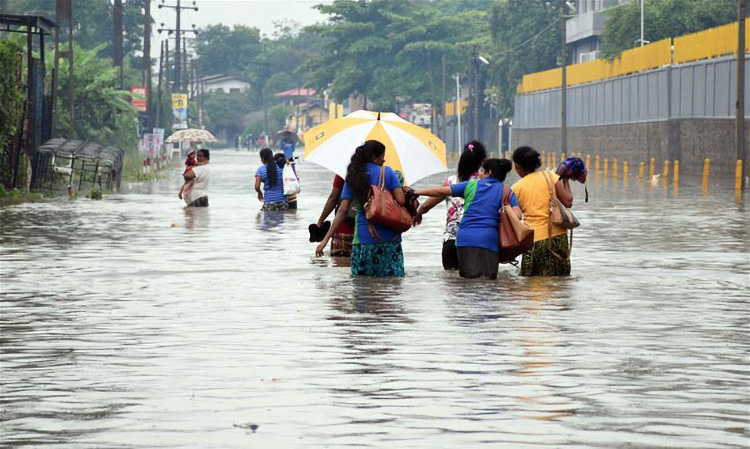NEWS
Writing on the wall for South Asia from climate change, several studies point out

People wading through water during a flood in a Colombo suburb (File photo)
Several research studies, published by peer-reviewed journals in recent weeks, have pointed out that Climate-change-induced downpours, drought, and soaring temperatures have become increasingly common across the eight countries of South Asia, making it one of the world’s most vulnerable regions to the impacts of global warming.
A University of Leeds study published in 2021 found the ice from glaciers in the Himalayas is melting “at least 10 times higher than the average rate over past centuries”, a result of human-induced climate change, Al Jazeera said in a report.
Researchers said the Himalayas, which cover countries such as Pakistan, Nepal and India, had lost 40 percent of their ice over several hundred years.
Water scarcity and low crop yields will result in adding to the continuing hunger crisis in the region, climate experts said.
In 2021, the UN’s Food and Agriculture Organization (FOA) said some 21 percent of people in South Asia faced severe food insecurity, a two percent rise from 2020. In the same year, the region had the highest number of undernourished people in the world – 330 million – the FOA said.
For thousands of years, South Asia was seen as the world’s “granary” for agriculture – a region with weather patterns well-suited for growing crops, Pakistan-based climate scientist Fahad Saeed told Al Jazeera.
“However, with the onset of climate change, the delicate balance which was important for crops to grow, has been disturbed,” Saeed said.
Results from a study published in 2021 on wheat production up to 2050, using crop simulation models, found the most negative effects will be seen in South Asian nations with a yield decline of 16 percent.
Environmentalist Anjal Prakash said climate change will have “significant implications” for food security in South Asia.
“Rising temperatures, changing precipitation patterns, and increased frequency of extreme weather events such as droughts, floods, and storms … pose substantial challenges to agricultural systems in the region,” said Prakash, adding livestock productivity and fisheries will be adversely affected.
Prakash said climate change could also make water availability a significant issue in the region, which has one of the highest number of glaciers in the world, situated in the Himalayas.
“Melting glaciers and changes in rainfall patterns can disrupt irrigation systems, affecting crop growth and exacerbating water scarcity,” Prakash, who has previously worked with the UN’s Intergovernmental Panel on Climate Change, asserted.
In 2021, the UN’s Food and Agriculture Organization (FOA) said some 21 percent of people in South Asia faced severe food insecurity, a two percent rise from 2020. In the same year, the region had the highest number of undernourished people in the world – 330 million – the FOA said.
Fears of declines in food production, together with other climate-related calamities, such as rising sea levels, have also raised the alarm as millions in South Asia are being internally displaced.
A report published by activist group ActionAid in 2020 estimated the region could see up to 63 million people become migrants by 2050 as a result of extreme weather events.
Huq said displacement from human-induced climate change was further adding to economic migration from rural to urban areas – a continuing phenomenon worldwide – with South Asia being a major “hotspot”, with the greatest displacement taking place in low-lying coastal areas.
“Climate change … is exacerbating the ‘push factor’ – the motivation to migrate away from place of residence – for people who are living in places where they can no longer continue to have livelihoods that they used to have, whether it’s farming or fishing,” he said.
